U heeft on langs ver nomen dat Uw exentrieke oom Wout overleden is. Het gerucht gaat dat deze oude zonderling het landhuis Korenvliet heeft nagelaten aan degene die zijn testament weet te vinden.
You recently heard your eccentric uncle Wout has passed away. Rumor is that he left the Korenvliet house to whoever could find his will.
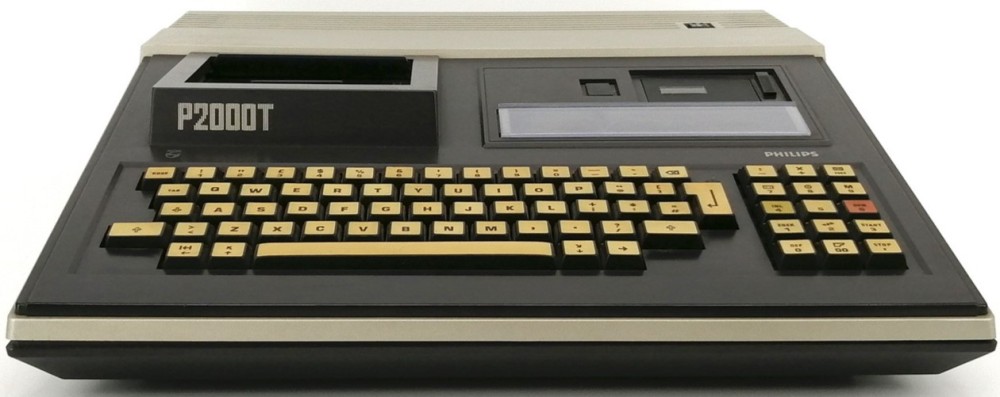
From the Home Computer Museum in the Netherlands.
The Dutch company Koninklijke Philips N.V., or just Philips, was founded in the late 19th century making light bulbs. It eventually became an electronics (and electronics appliance) titan. They survived through WWII by managing to move the company’s capital and operations to the United States and the actual listed headquarters to the Netherlands Antilles, moving back to Europe afterwards (leaving the North American Philips Company as a separate company in the US). They were (and still are) large enough that their reach spread throughout all of Europe, with groups in countries like Belgium, Austria, and Sweden.
After WWII, they would seem like a natural company to gravitate to computers; however, Philips was used to more “mass” products, and computers at first seemed like something restricted to very large companies. They ended up having more success with components (particularly their Electronic Valves division) and in the mid-50s they made an agreement with IBM to provide them with components while they stayed out of the computer market (and vice versa). This agreement eventually slid apart by the end of the decade, first with the room-scale Philips Akelig Snelle Calculator (PASCAL) which went active starting in 1959.
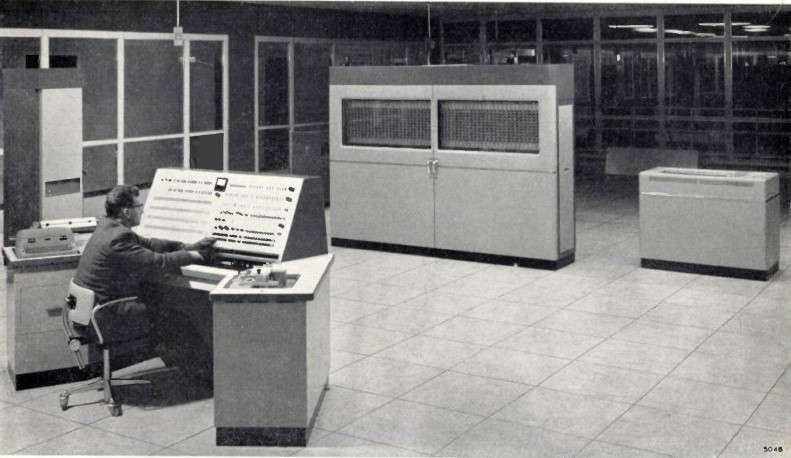
From the Philips Technical Review 1961.
Soon after, Philips started manufacturing computers and related devices for office settings, using the naming format P1xxx. A 1971 catalog lists a P1020 Punched Tape Reader, a P1040 Disc Control Unit, a P1075 Central Machine, and a P1086 Teleprinter, amongst other devices meant for companies.
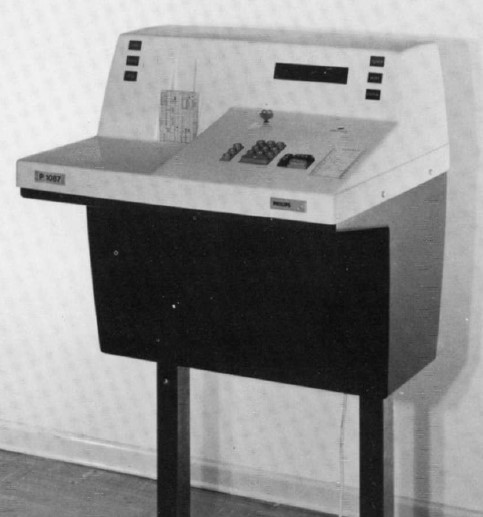
A P1070 Data Collection Device for feeding punched cards.
They focused on office computers for a long time, and snuck in the home market only sideways in 1975 via a gaming device, one of the first in Europe for homes, the Tele-Spiel ES-2201. It included swappable “cartridges” which were the hardware for a game (rather than stored programs).
They went on to manufacture the Philips Videopac G7000 (known in the US as the Magnavox Odyssey 2), a regular videogame system with traditional cartridges that was a competitor to the Atari 2600 (amongst other gaming consoles); however, unlike the Atari it came with a full keyboard and was partly in the odd hybrid console/computer state that was in vogue at the time (see also the Bally Astrocade).

Box close-up of an Odyssey 2 from CodeDojo.
Still, the Videopac wasn’t a proper home computer, and Philips finally entered the market in March 1980 with the P2000. According to this information from a former manager at Philips, the device was originally conceived of in Sweden (using the name P1000) before getting finished in Austria (being redubbed the P2000, since the P1xxx was used for office machines). I will confess I am still nebulous about this and I’ve seen contradictory information in various places but it does seem to be true that the machine was essentially Frankensteined together from various Philips products: an electronic typewriter as the base, tapes via a Philips dictation machine, cartridges via the Videopac. The display used a teletext screen, which made things simpler in manufacturing terms but meant the system was restricted to very low resolution. (The much more successful BBC Micro had a teletext mode but also a higher res mode; the P2000 did not.)
The long association of Philips with business put up a sincere concern amongst the company that people would be turned off, hence the founding of the Philips P2000 Computer Club (P2C2) in 1980 (technically speaking, opening up a closed-membership club founded the year before for research testing purposes). Computer clubs became a strong part of the early computing culture of the Netherlands (the group p2000gg coming a year later, in 1981).
Just like any other computer club, the P2C2 distributed programs, one of them being a port of Pirate Adventure to P2000 (translated into Dutch). What concerns us today is a Dutch original game from 1982, also from the the P2C2 but otherwise with no author.
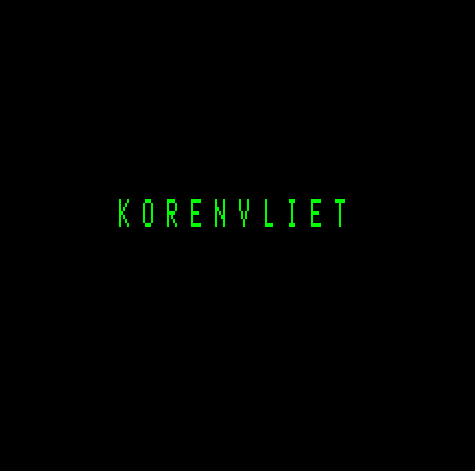
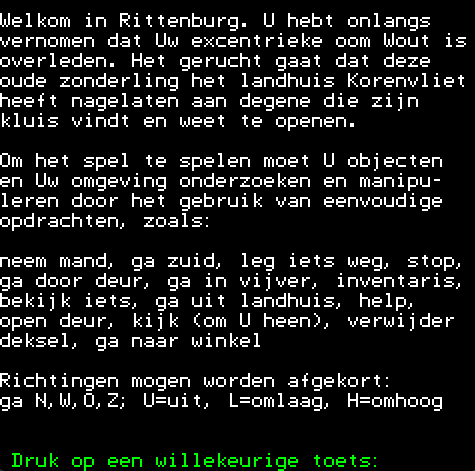
While (see screenshots above) I do have a copy of the game via the P2000T Preservation Project, and I also have a copy from the late 80s in GW-BASIC, I started by playing the modern translated version:
KORENVLIET
A short adventure by Alexander van Oostenrijk @ Independent Software
(www.independent-software.com), based on the original korenvl.bas (author unknown).
Copyright 2016.
First-time players should type “about”.
Version 1.2You were recently informed that your eccentric uncle Wout had passed away. There is a persistent rumor that the old crackpot left the Korenvliet estate to whomever manages to locate his will – even you, his least favorite nephew.
Today, you’ve dutifully travelled down to the village where the estate is located to start your search of the grounds.
Main Street
This is the cobbled main street of the village which has grown around the sprawling estate over time. The impressive front door of the stately villa of Korenvliet is to the east, while there is a small supermarket to the west and a village clinic to the southwest. A narrow path leads to a forest to the south, and there seems to be a vacant lot to the north.
One thing I had in the back of my head was that, despite “wacky inheritance” stories eventually becoming a whole category in text adventures, it wasn’t really a thing yet. In particular, the only other game I could think of with such a plot was Stoneville Manor, a completely innocuous game and the only one known by Randy Jensen.
Then I got to mapping, and found a balloon, a boat, a stove (?), a lake with a fish, a snorkel, a book…
> read book
You glean from the book that amateur hot air balloon construction requires a balloon, a stove with some fuel, a gondola and some cable or rope. It also states that one should build that balloon in “a suitable spot”. Well, that would be an interesting if risky project. It’s amazing what old Wout got up to in his old age. Since there has been no news of hot air balloon experiments near the village, he must not have gotten around to actually doing it.
…and then with the book it hit me: this was Stoneville Manor. This is actually a quite direct port.

The opening of Stoneville Manor.

The opening of Korenvliet. This is an exact translation into Dutch, other than the name of the manor has changed.
I decided immediately to test one of the most memorable things about the original game, which was going south twice to a forest, climbing a tree, and landing in a hospital. To get out of the hospital you need to type GET WELL.
Plaats: in het ziekenhuis
Uitgangen: uit
U ziet:
Wat nu: ga uit
Ik voel me niet goed.
Yes, it’s in! (“Ik voel me niet goed” -> “I don’t feel good”.) Unfortunately, I don’t know what the corresponding pun is in Dutch to escape the hospital, and I was not able to check the source code. (LIST in GW-BASIC upon loading the code gives me “Illegal function call” — something in the code is hacked to prevent listing it, I think? Either that or something in Dutch is confusing the program.)
I did sufficient tests to decide there weren’t any other changes of note, other than the lore of the game as a whole. The original had a Mr. Stone die who was no relation to yourself; in this case, it is your uncle.
This changes the lore to be based on a Dutch series of books! Specifically the Adriaan and Olivier books, a series of nine from the author Leonhard Huizinga. They kick off when the twins in the title inherit their country house from their previously unknown uncle, the house being, of course, Korenvliet.
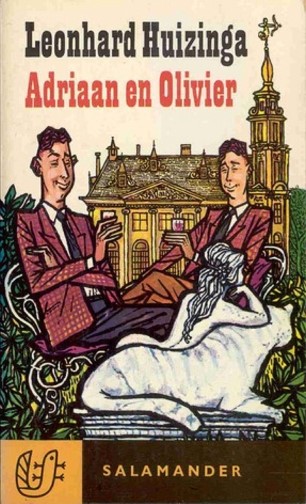
So just to be clear about what happened:
Somehow issues of the English magazine Creative Computing ended up in the Netherlands. Specifically, December 1980 (for the Pirate Adventure source code) and August 1981 (for Stoneville Manor). Both games were ported by the Philips Computer Club. Pirate Adventure was always known as a Scott Adams game, but the Jensen one was a bit more obscure, so it was assumed to be originally written in Dutch. This version spread to more ports in the 80s (including GW-BASIC and MSX) and from the GW-BASIC version eventually got translated back to English in TADS 3 format by Alexander van Oostenrijk who was unaware there was an English original and made it “modern” with longer descriptions.
This reminds me of a pair of adventures. One was about killing Dracula, and has some undistinctive title like “Castle Dracula” or “Dracula Adventure”. The other was an early work of AIF titled “Madame Fifi’s Whore House”. They were completely isomorphic: the map, the locations of the objects, the puzzles. Clearly someone made one of the games by starting with the other and changing all of the text and a few of the verbs but leaving all the logic alone. And I have no idea which was the original and which the modified version. Something to look out for as you progress through the 1980s, I guess.
… which direction did the conversion go, from dracula to fifi or fifi to dracula?
I was just looking at some of the various Dracula games on CASA. Combing through and spotting duplications to combine entries is an ongoing process and I’ve got a few that seem like obvious Dracula duplicates. However… I wouldn’t have ever thought to pair up Fifi with one of the Dracula games. However, like you say, this one appears to follow a very similar pattern to Madame Fifi, looking at the solutions… http://solutionarchive.com/game/id%2C5083/Castle+Dracula.html
I think that Dracula just linked is the 1980 one by Mike Bassman
https://bluerenga.blog/tag/vampire-castle/?order=ASC
Yes, that definitely matches up which is interesting as Madame Fifi is also in our database for 1980… but there’s no concrete evidence of that date, unlike with Vampire Castle.
Ah yes, once I had the correct title for the game it was based on there are at least several references online pointing out that Fifi is a reskin of Vampire Castle. I think I’ve got some tidying up and editing to do on quite a few entries…
Wow!! Authentic software archeology this time! Good work!
Not where I expected this one to go! It made for a change of pace at least
I guess it’s easier to port a parser to a different language when the original parser is just checking to see whether the player has entered the exact string.
Give the number of unofficial versions of Stoneville Manor this isn’t a big surprise. We’d spotted the (many!) English copies, such as Ghost Buster and Tommy’s Manor… and various other unofficial but commercially published rip-offs. But nobody had spotted this Dutch one, despite having maps and solutions for them on CASA and plenty of Dutch speakers… I’m going to blame the Adriaan & Olivier stuff for throwing us off the scent. ;) Good spot.
Pingback: Ship Adventure (1982) | Renga in Blue
Pingback: Schatzoeken (1982) | Renga in Blue
Combing through the Goldklang database, I came across a seemingly otherwise unknown Dutch translation of this game, labeled there as “Bank Adventure” (avontuur.bas). I took a look at the code, and it seems to be fairly faithful to the original, although there’s at least one funny addition where the voice tells you to read Smith’s Recreational Computing article if you want to “renovate the house”.
This discovery, when viewed in light of Korenvliet, the multiple Schatzoekens, etc., raises an interesting question: Why were early Dutch adventures so relatively heavy on translations rather than original creations, when the languages are so closely related, and any potential audience they may have had would surely have had little difficulty in playing these simple adventures in English to begin with?
Some of this might be chalked us up to us simply not having all the content. In addition to Dracula Avontuur and Nijmeegs we know that the latter was based on the layout of an earlier game (and it seems there were two of them?) and there’s a lost Colditz game. So in the ’80-’82 time span based on what we know 3 out of 5 original games are lost (even Dracula is kind of “lost”, at least in its 8k incarnation for PET).
That’s a good point. I did notice two other relatively early (1983) Dutch adventures on Goldklang that appear to be originals, Devil’s Forest and Flying Dutchman. Unfortunately, they have screenshots but no download links, and I haven’t been able to find them on any other TRS-80 archives. I also found a mention of their author, Huub Sanders, on a list of contest winners in a 1981 issue of Softside, so he may be a good example of a Dutch author who was aware of developments in the US, but still chose to write original games in Dutch.
“Illegal function call” when attempting to LIST a program in IBM BASIC means indeed that the author is deliberately trying to stop you from viewing the program. If you look up the IBM BASIC documentation, it should imply this is the cause. I know this myself because it was common protection back in the early 1980s.
A modern analysis of how to undo the protection is here:
https://slions.net/threads/deciphering-gw-basic-basica-protected-programs.50/
This protection wasn’t actually all that hard to defeat even in the 1980s without any Internet access, but the once-standard method (the BLOAD method in the article, which did work for me as a kid) will not work in DOSBox + GW-BASIC. Any of the other methods in the article look like they should work, and I bet PCE/ibmpc would also allow the once-standard method to work, but I haven’t tried any myself.
Do you have that protection-remover file that’s linked by Thomason (where the file was taken down)? That seems like the easiest way to go and it’s the sort of thing I’m going to want for the future. (I see the source is on Github but I’d have to wrangle together DOS assembly language stuff.)
Try “unpbas11.zip” from this Simtel mirror:
https://ftp.sunet.se/mirror/archive/ftp.sunet.se/pub/simtelnet/msdos/basic/